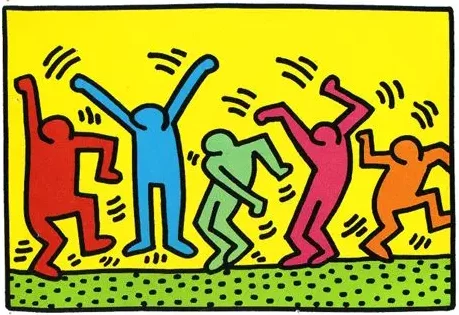Community
This morning my students took a lot longer to get started than normal. I showed up early and was finished with an entire qigong routine before any of them had arrived. They spent a great deal of time chatting and catching up – it’s been several weeks since we were all together, and it took quite a bit of time for everyone to get focused on what we were all there to do.
If it were any other group of students I probably would have been more enthusiastic about getting started on time. This class, however, is made up of Lodge Brothers and Eastern Star Sisters. It’s a “community within a community.” We all really do see each other as “family,” and it does no one any good to try to impose my will on such a group.
The tai chi community is joined together by our love of the art and not a single thing else. We come from all walks of life – all ages, sexes and conditions, all creeds, sects and opinions. The fact that we are able to remain a “community” despite our differences is one of the things I love best about the art. It allows us to become true friends with people who would otherwise remain at a perpetual distance.
Every few years a symposium is held somewhere in the world (last one was in Italy in 2019) involving the major family styles of tai chi: Chen, Yang, Wu-Hao, Wu and Sun. The Grandmasters of these styles all meet at these symposia, demonstrate the various forms, hold seminars and workshops, and the usual other things large groups with a shared interest do at a convention. I’ve never been to one, but I’m glad they happen.
The first reason I’m glad these events happen is because tai chi is important to me, and I’m glad to see it actively promoted. It wasn’t always this way – traditionally, martial arts were a closely-guarded family secret. While this had benefits for a given family and its lineage, it doomed many otherwise good martial arts to eventual extinction. There is much we don’t know about many traditional Chinese martial arts simply because those who knew anything about them took that knowledge to the grave.
Another reason I’m glad for a symposium that brings different tai chi styles together is because it fosters a real feeling of community. You’ve often heard me say that the differences between one family’s style of tai chi and another’s is much like the difference between strawberry ice cream and pistachio ice cream. They taste different, and we might prefer one to the other, but there’s no denying they’re both ice cream. It’s the same thing with tai chi. Each family’s style has true differences, but the fundamentals are all the same.
Chen alternates soft, smooth moves with explosive, powerful ones. It is easily distinguished by its emphasis on “silk-reeling,” a subtle manipulation of internal energy that externally resembles a swirling motion.
https://www.youtube.com/watch?v=Q87jp_A1P44
Yang has large movements and is evenly paced. It’s the style we all recognize.
https://www.youtube.com/watch?v=ESmo4-vKPsg
Wu-Hao is slow and close-ranged – its “frame” is not as large as Chen or Yang.
https://www.youtube.com/watch?v=Hc5_DRYsxrw
The Wu form is light and lively. The “frame” of the hands is about the same as Yang, but the steps are very close together, much closer even than Wu-Hao.
https://youtu.be/SjfyHtO98d0?t=429
Sun gives the impression of a composite of the previous forms and incorporates elements of xingyi quan and baguazhang (the other major Chinese internal martial arts). It’s graceful and dynamic and is the “youngest” of the five family styles, developed by Sun Lutang in the 1920s.
https://www.youtube.com/watch?v=fFwo_YXMhzM
You’ll notice of course how externally different each of these styles are. Even within each style, each teacher will have his or her own variations. It could be they learned from a different grandmaster than someone else, or have physical limitations that force them to do a posture/transition a certain way, or they may have figured out a new wrinkle that causes them to perform a move with a different intent (I do this with “Step Back and Repulse Monkey” and “Fan Through the Back,” for example). But I hope you’ll also notice the things they all have in common – the importance of structure, the use of “internal” energy and not brute strength, the serene calm, the importance of balance and so on. As long as the fundamentals are observed, it’s all tai chi.
This leads us to the question – or rather to the way we ought to address the question – of “Which style is best?” In one sense, it’s as meaningless as “Which color is best?” or “Which word is best?” More practically, most American tai chi players don’t have a heck of a lot of choice – unless they’re in a very large city, they do the style the one teacher who is nearest them does, and that’s it. And in the end it really doesn’t matter which style one does. It’s more important to be as good as we can at the one we do. A good Wu-Hao player will express their art better than a poor Chen player, and so with all the rest of the styles.
For my part, I am actively and committedly uninterested with “Which style is best?” But I am interested in what the different styles all have in common. And I’m very much interested in “Who can do their style the best?” and “Who can help me better learn my style and better teach it to my students?” We as Yang style tai chi players are part of the larger tai chi community. We are the heirs to a proud legacy of a noble art with a long and worthwhile history. We do best when we celebrate the community we’re a part of and share its benefits with the wider world.

